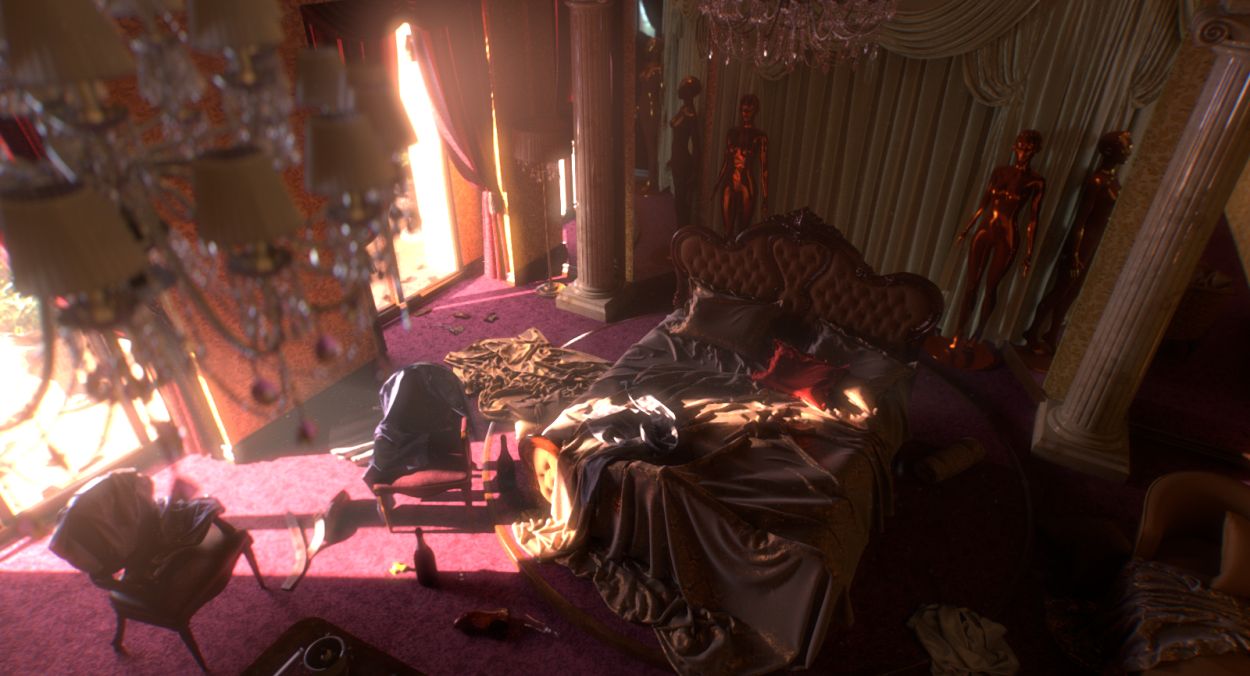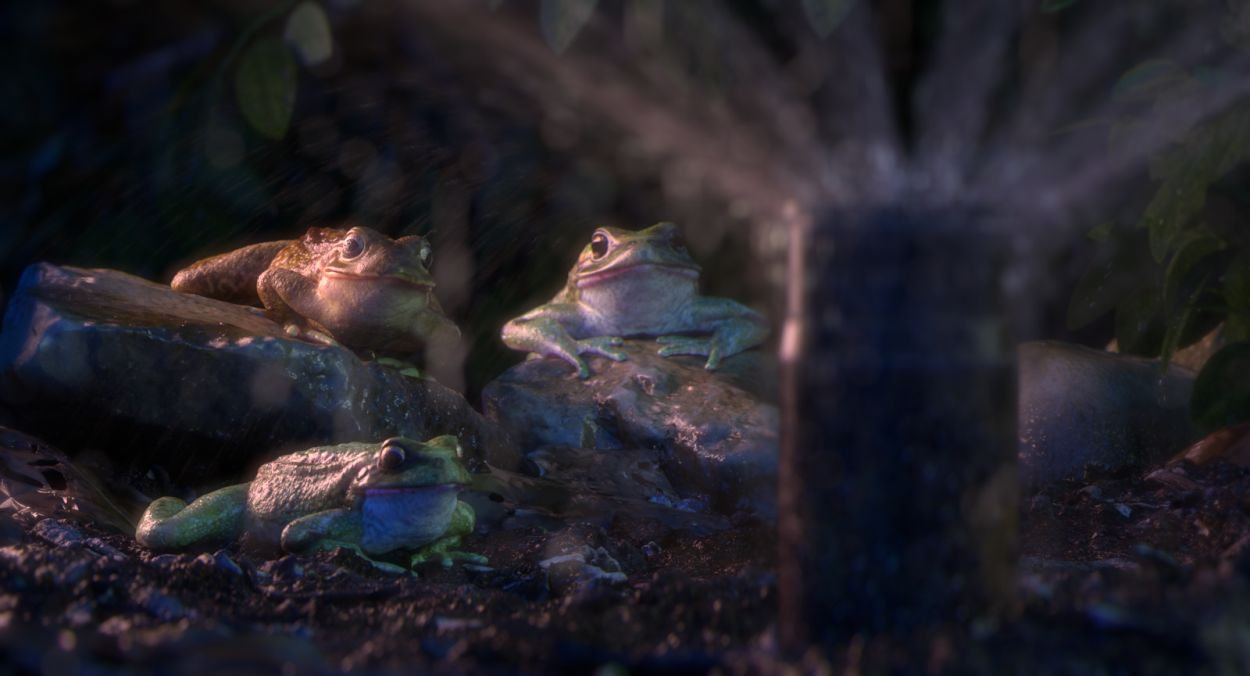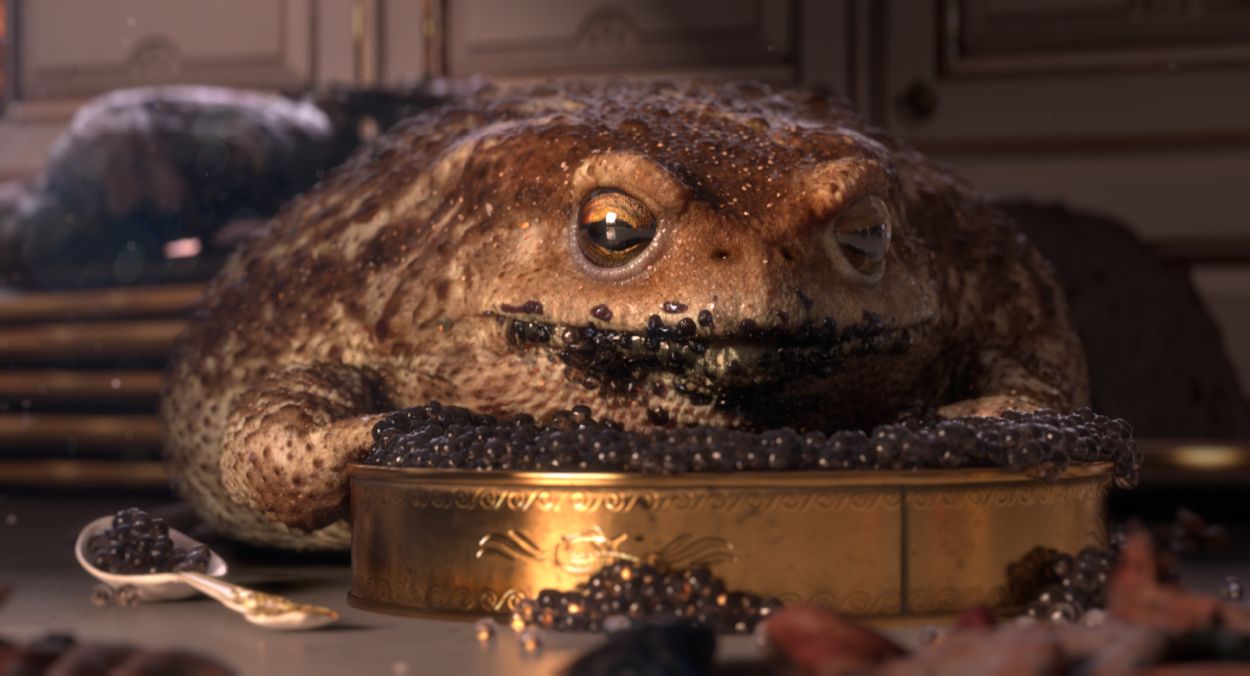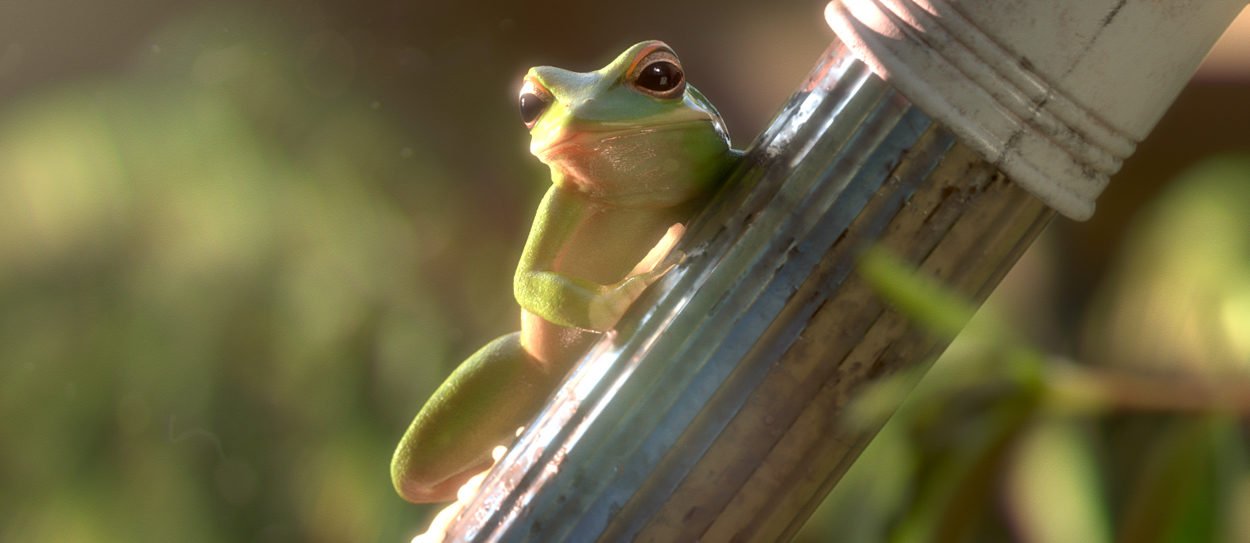“Garden Party” making of – winner 2016 in the category “Best Young Production”
The frogs have the whole place to themselves – but why? We only learn the truth at the end of this funny and macabre student film. The jury was immediately won over by the picture-perfect aesthetics of the project and decided in 2016 to give the 20th anniversary animago Best Young Production award to the team from the MOPA School in France. The award is sponsored by DP and comes with a €3,000 cash prize.
A group of frogs are having a blast in a gorgeous house with a backyard pool. There are promising tête-à-têtes (it’s up to your own fantasy to decide whether they move to the next stage), great jumps up to the big windows and a night-time garden party with an accompanying light show. Life as a frog on this grand estate is fantastic when the owner isn’t home. And the visuals of the house would suggest the owner hasn’t been back for a while now.
Every single image in “Garden Party” – as regards the environments, animation, shading, lighting and texturing – is infused with love. The film’s slower pacing also helps give it a special mood and slapstick atmosphere.

Inspiration & project duration
“Garden Party” was inspired by a previous short called “Locked up” created by team member Gabriel Grapperon. In that film, two toads sitting by the river attempt to catch a fly – with differing degrees of success. The team was keen to showcase these same amphibians in a larger and even more elaborate setting where innocent animals must make do in a human environment. The result is a comical contrast with touches of black humour. The six-person team worked full-time for nine months on this almost seven-minute short film before finishing it in June 2016. In the course of the production, each student alternated between the various work stations; however, during the development phase, the team ended up creating “mini departments” consisting of one or two students. This was their solution to problems that arose in terms of the asset scanning, the FX and the editing, among others.
Live references
In order to make the film as realistic as possible, the team generated footage material of swimming pools and gardens at different times of the day. Real estate developers also supplied them with several videos of luxurious home interiors. In order to be able to observe frogs directly at all times, the students set up two enclosed ecosystems. These references gave the team the foundations they needed in terms of the story, animation, look development and many other process stages.

Scanning in the garage
One of the most exciting project phases took place directly at the beginning – in a garage. As many companies in Silicon Valley have already shown, this environment is often an ideal basis for creating something really big. Thanks to scanning sets with Capturing Reality software set up in the garage, the team was able to recreate real assets of photographs in a 3D space and thus accelerate the modelling extremely. This increased the realism of the CG environment and also saved valuable time. Following that, they used ZBrush for the character sculpting and the modelling of the frog environment.
The texturing for the characters was created using Mari; for the texturing of the props and sets they used Substance Painter. The team completed the shading, lighting and rendering using Arnold in Maya. For the network rendering, they used Deadline on a project for the very first time; prior to that, the team had always used Backburner. Deadline was convincing all around: for extremely large render processes such as the ones in “Garden Party”, it offered a comfortable workflow with many features. They attained most of their FX simulations using nParticles and Bifrost in Maya. And, when it was necessary, the students fell back on Houdini. In the end, all 3D elements were assembled in compositing using Nuke.
Script service provider
For repetitive tasks, the team wrote a number of small scripts: for example, a Zscript for the cleaning-batch processing of the 3D scans and a macro script that made it possible to enter a folder containing RAW scans into ZBrush. The zremesh, reprojection, unwrapping and texture extraction for over 100 assets was carried out entirely automatically using this approach, and clean assets were then exported with a pre-shading into Maya. They were also able to optimise the rigging process in Maya with the help of scripts, and the Yeti plug-in helped in the case of some fur simulations. The team used alShaders (individually customised shaders for the Arnold renderer) for the surfacing, which worked extremely well. They used Video Copilot’s Optical Flares plug-in for the compositing, while the Bokeh plug-in by Peregrine Labs was their choice for all film shots.

Challenges
The modelling of the scanned assets presented the students with one of their biggest challenges in the process. Another challenge was making the frogs as photorealistic as possible, which was necessary for the team to create the documentary look they were going for. The rigs were set up in a highly complex way and corresponded to the skeletal and muscular system of a real frog.
The team also tested Nuke’s Deep Compositing for some of the shots; however, this increased control of the ZDepth involved one gigabyte per frame, which resulted in the artists adapting the depth directly in the CG instead.
(Mirja Fürst)
Credits “Garden Party”:
School: École Mopa – Team: Théophile Dufresne, Florian Babikian, Gabriel Grapperon, Lucas Navarro, Vincent Bayoux, Victor Claire – Country: France
Software: Maya, Arnold, ZBrush, Substance Painter, Mari, Nuke, Houdini, Capturing Reality
“Best Young Production” nominees in 2016 were:
Accidents, Blunders and Calamities
School: Media Design School – Director: James Cunningham – Co-producer & Cinematography: Oliver Hilbert – Country: New Zealand
Software: ZBrush, Maya, Houdini, V-Ray, Nuke, Premiere, Shotgun
Résistance
School: Mopa School – Team: Alex Chauvet, Anna Le Danois, Quentin Foulon, Fabien Glasse, Juliette Jean, Julie Narat – Country: France
Software: 3ds Max, ZBrush, Maya, Mari, Substance Painter, Houdini, Nuke

